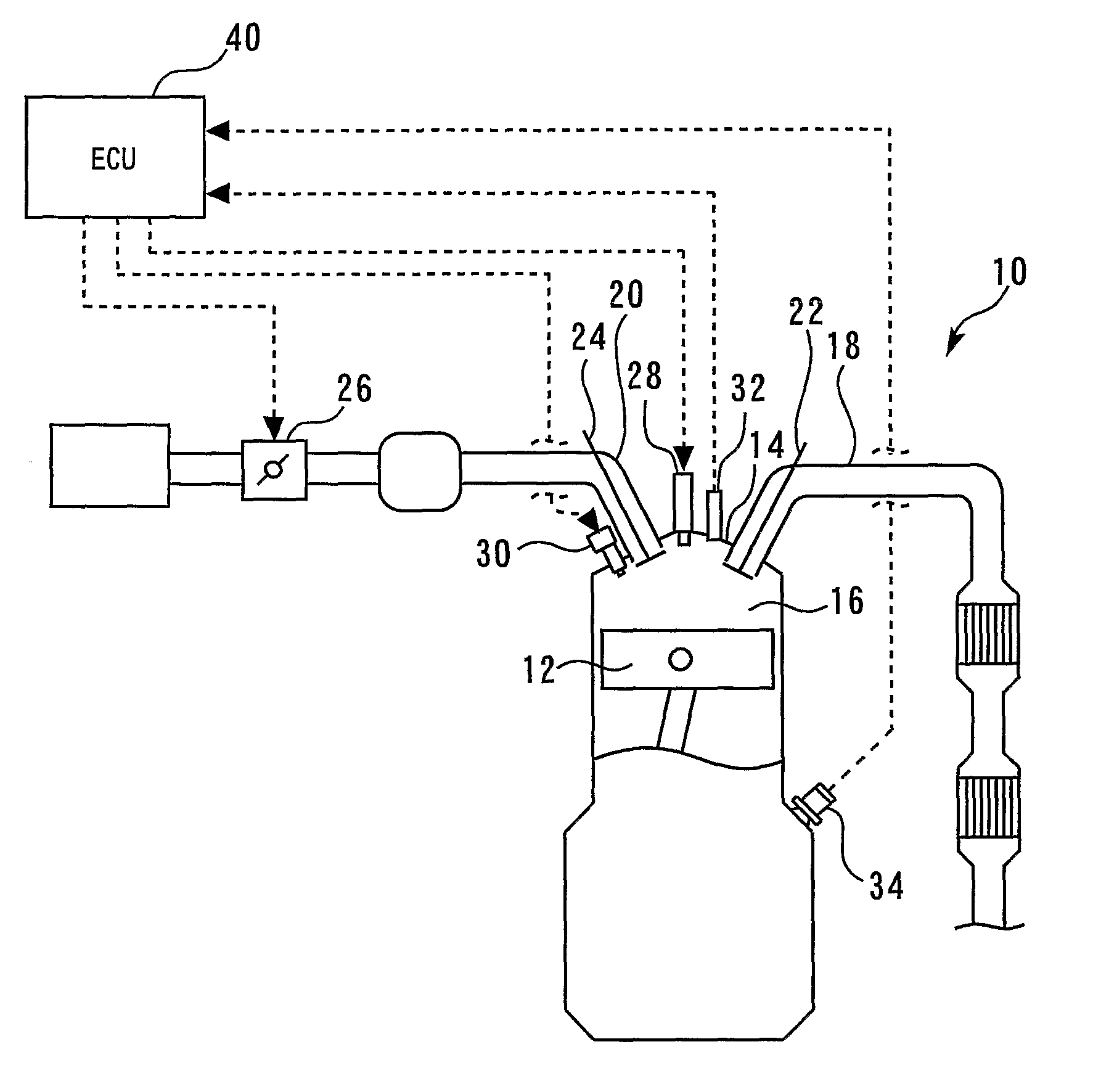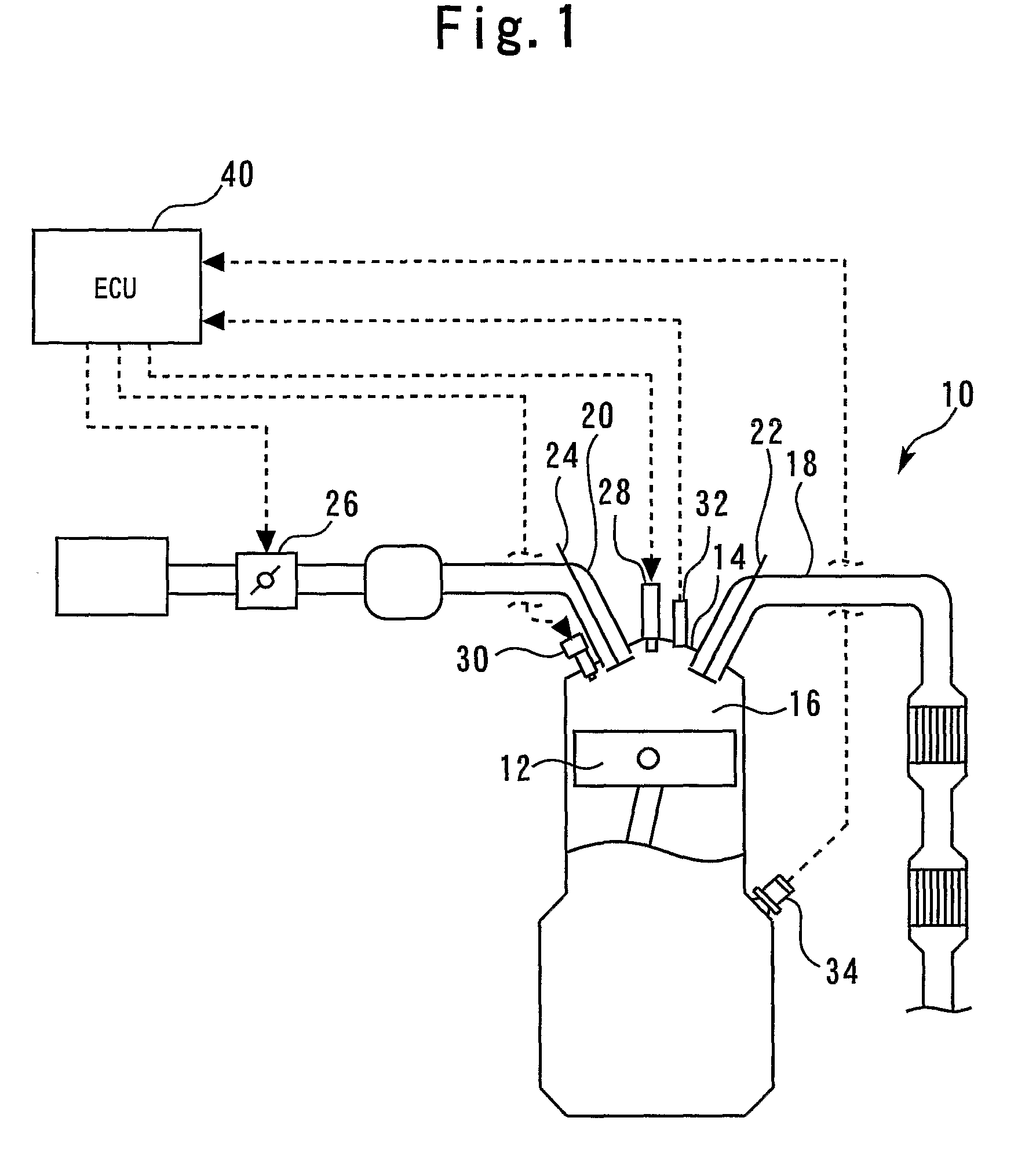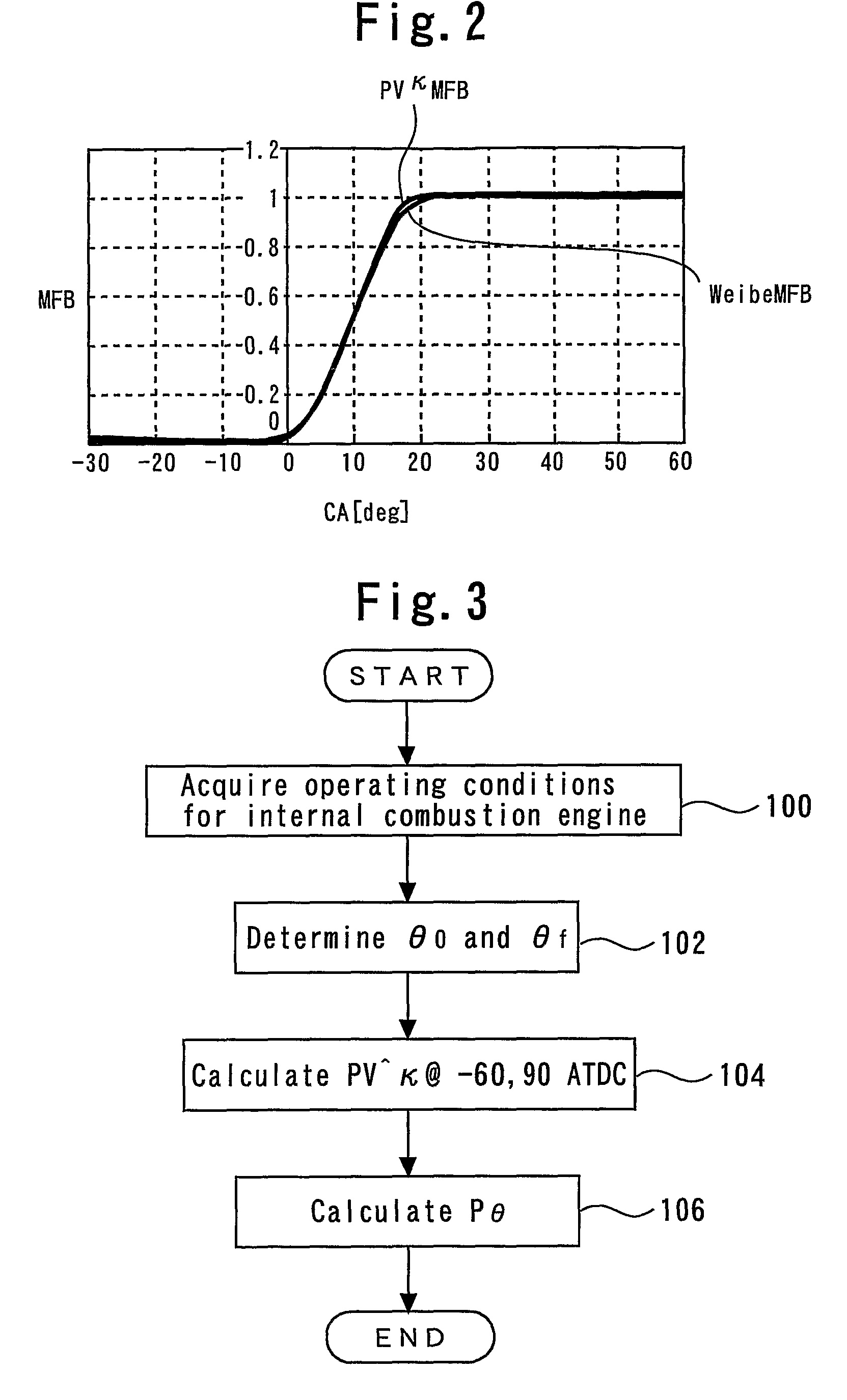Internal combustion engine control apparatus
a control apparatus and combustion engine technology, applied in the direction of electrical control, process and machine control, instruments, etc., can solve the problems of complex calculation formula for determining parameters, parameter cannot be easily calculated by a present-day vehicle-mounted computer, and calculations are extremely difficul
- Summary
- Abstract
- Description
- Claims
- Application Information
AI Technical Summary
Benefits of technology
Problems solved by technology
Method used
Image
Examples
first embodiment
[0072][System Configuration Description]
[0073]FIG. 1 illustrates the configuration of a first embodiment of the present invention. As shown in FIG. 1, the system according to the present embodiment includes an internal combustion engine 10. A cylinder in the internal combustion engine 10 is provided with a piston 12 that reciprocates within the cylinder. The internal combustion engine 10 also includes a cylinder head 14. A combustion chamber 16 is formed between the piston 12 and cylinder head 14. The combustion chamber 16 communicates with an intake path 18 and an exhaust path 20. The intake path 18 and exhaust path 20 are provided with an intake valve 22 and an exhaust valve 24, respectively. The intake path 18 is also provided with a throttle valve 26. The throttle valve 26 is an electronically controlled throttle valve that is capable of controlling a throttle opening independently of an accelerator opening.
[0074]The cylinder head 14 is provided with an ignition plug 28, which p...
second embodiment
[0097]A second embodiment of the present invention will now be described with reference to FIGS. 7 and 8.
[0098]The system according to the second embodiment is implemented by adopting the hardware configuration shown in FIG. 1 and allowing the ECU 40 to execute a routine shown in FIG. 7 instead of the routine shown in FIG. 3. More specifically, the system according to the present embodiment differs from the system according to the first embodiment in that the latter uses the ignition plug 28 as an ion probe (ion current sensor) that detects ions generated in a cylinder during a combustion period as an ion current Ic. The system according to the present embodiment uses such an ion current Ic to acquire the record of the estimated in-cylinder pressure Pθ.
[0099]FIG. 7 is a flowchart illustrating a routine that the ECU 40 executes to implement the above functionality in accordance with the second embodiment. In the routine shown in FIG. 7, step 300 is performed first to detect an ion cu...
third embodiment
[0107][Knock Judgment According to Estimated In-Cylinder Pressure Pθ]
[0108]A third embodiment of the present invention will now be described with reference to FIGS. 9 to 12.
[0109]The system according to the third embodiment also uses the hardware configuration shown in FIG. 1. The third embodiment is characterized by the fact that the estimated value of the in-cylinder pressure Pθ, which is acquired by the routine shown in FIG. 3, is used to check for knocking.
[0110]FIG. 9 is a flowchart illustrating a routine that the ECU 40 executes to implement the above functionality in accordance with the third embodiment. When the third embodiment is described with reference to FIG. 9, steps identical with those described with reference to FIG. 6 for the first embodiment are designated by the same reference numerals as their counterparts and omitted from the description or briefly described. In the routine shown in FIG. 9, step 200 is performed first to compute the record of the estimated in-c...
PUM
 Login to View More
Login to View More Abstract
Description
Claims
Application Information
 Login to View More
Login to View More - R&D
- Intellectual Property
- Life Sciences
- Materials
- Tech Scout
- Unparalleled Data Quality
- Higher Quality Content
- 60% Fewer Hallucinations
Browse by: Latest US Patents, China's latest patents, Technical Efficacy Thesaurus, Application Domain, Technology Topic, Popular Technical Reports.
© 2025 PatSnap. All rights reserved.Legal|Privacy policy|Modern Slavery Act Transparency Statement|Sitemap|About US| Contact US: help@patsnap.com



